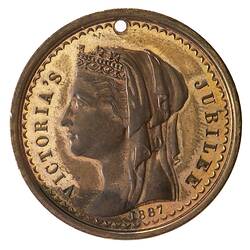The Semaphore Corporation was established in 1883 from parts of the District Councils of Glanville and Le Fevre Peninsula, South Australia. The Semaphore area was first surveyed by the Government in 1849. Two years later the original Semaphore Hotel opened on the south corner of Blacker Street and The Esplanade. In 1856 the Telegraph Line extended to Semaphore from Port Adelaide, and in 1859 Port Bridge opened, connecting Semaphore and Port Adelaide. The following year Semaphore Jetty was completed, although it took a further two years for the road from the Semaphore Jetty to Port Bridge to be completed. In 1864 the District Council of Glanville was formed to govern and represent the growing community. The 1860s also saw two more hotels open, and two churches. In 1872 the District Council of Le Fevre's Peninsula was formed. Stately homes were erected in the area, and in 1876 Le Fevre's Peninsula Public School opened.
In 1878 Port Bridge was replaced with Jervois Bridge, which carried the railway line to Semaphore. A railway line from Port Adelaide via St Vincent Street opened in the same year. Community infrastructure continued to develop in the 1880s and 1890s, including a water tower on Blacker Street, a new mail station built on the south corner of Semaphore Road and the Esplanade, a new post & telegraph office and a customs boarding house. Organisations such as the Semaphore Institute, Semaphore Lawn Tennis Club and Semaphore Masonic Lodge were founded.
The Semaphore Corporation struck a medal at the Adelaide Exhibition, held to celebrate Victoria's Jubilee in 1887 (NU 34842). The medal named J. C. Lovley as Mayor.
In 1900 the Semaphore Corporation amalgamated with Port Adelaide Corporation, and the following year the Wonga Shoal Lighthouse became operational, superseding the Port Adelaide Lighthouse, which was removed to South Neptune Island. Eleven years later it was knocked over by the ship 'Dimsdale'. Development of public transport continued, with the Semaphore/Outer Harbor Railway re-routed via Commercial Road Station and the Electric Tram Service operating from Port Adelaide. The tram service closed, in 1935, but in 1941 a new railway station opened.
In 1937 Semaphore Signal Station was superseded by the one at Outer Harbor.
In the 1960s and 70s many historic buildings in Semaphore were demolished or threatened. Demolitions included the mail station, Colonel Lovely's former home at 89 The Esplanade, on the south corner of Dunn Street, and the 1919 Rotunda erected north of the Jetty by the Municipal Tramways Trust. Fortunately, the customs boarding house was saved from demolition after a prolonged campaign.
The community was also changing in other ways. In 1966 the Semaphore Police Station ceased operations, and in the 1970s closures included the Congregational Church on Jagoe Street, Harrington's Drapery, Coles Variety Store and the Odeon Star Cinema. The railway service from Glanville also ceased. In the 1980s the post & telegraph office and the Semaphore Cinema also closed. The late 1980s and 1990s, however, saw a revival of the area and the restoration of many public and private buildings.
References
Semaphore SA web site http://www.semaphoresa.com.au/semaphore/html-historic/chronology.htm.
More Information
-
Keywords
-
Localities
-
Authors
-
Article types

